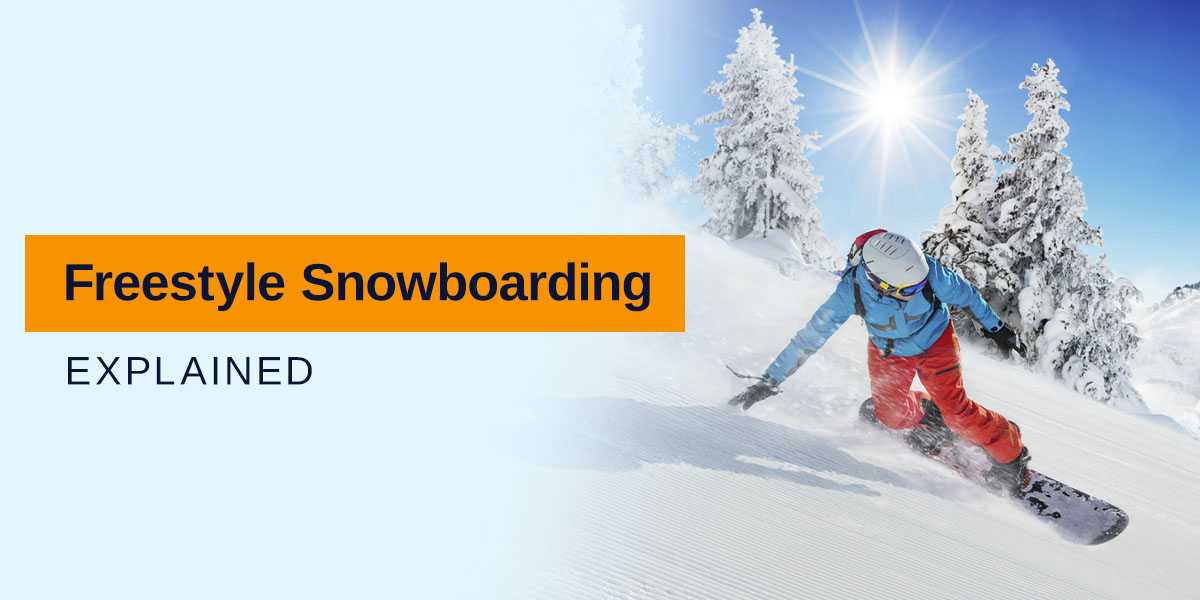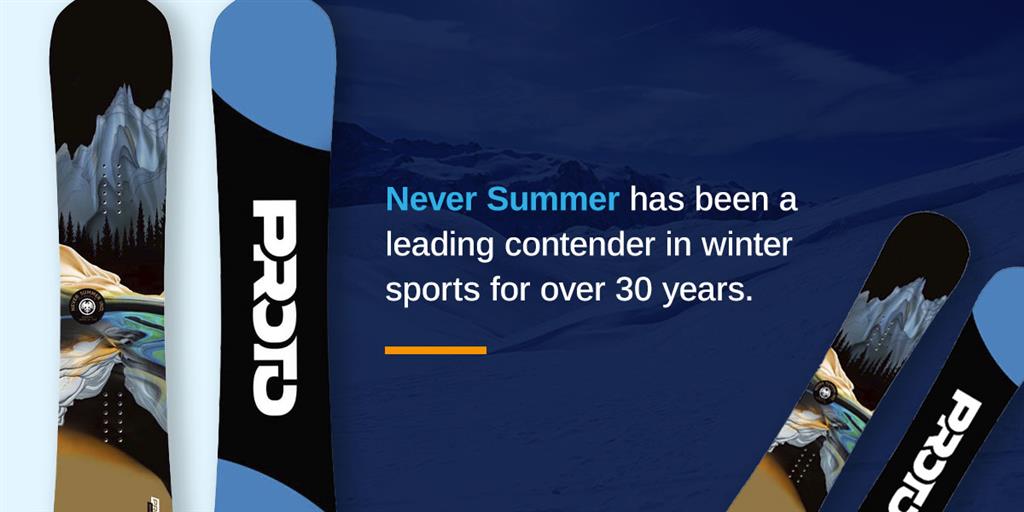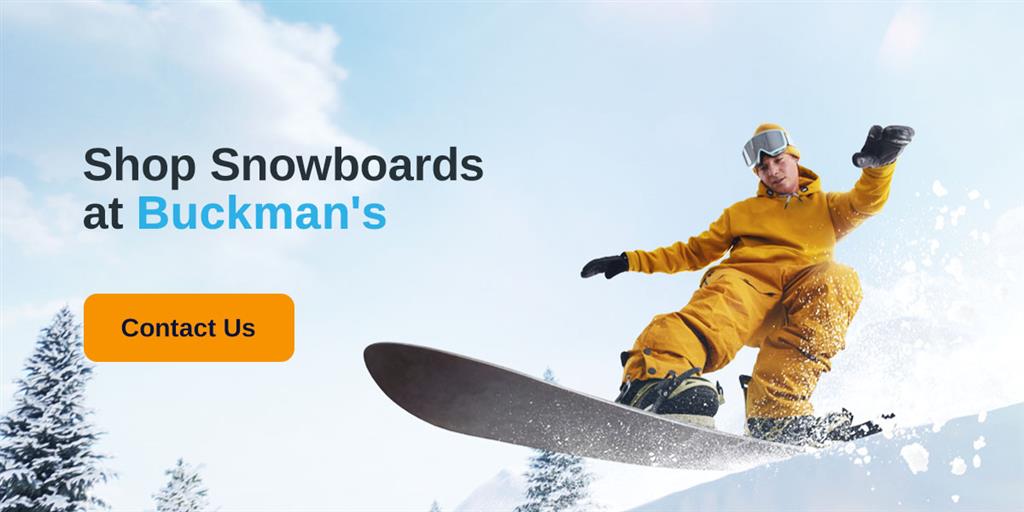 Freestyle Snowboarding Explain
Freestyle Snowboarding Explain
Freestyle Snowboarding Explained
Posted
by
Matt Gahman
on Friday, November 15, 2024
Freestyle snowboarding is the ultimate adrenaline-seeker sport — it's all about throwing tricks, catching air and pushing the boundaries. Freestyle snowboarding has also brought international attention to the sport and attracted riders from beginners to pros.
This guide defines the various styles of freestyle snowboarding, plus the must-have techniques and equipment for an unforgettable experience.
What Is Freestyle Snowboarding?
Freestyle snowboarding is about performing jumps, spins, slides and more off artificial obstacles and natural features. It's a thrilling sport that combines traditional snowboarding and tricks.
Freestyle snowboarding became an Olympic sport in 1998, with a course featuring an impressive halfpipe. Snowboarders can enjoy this sport on any mountain or head to a terrain park to test their skills with equipment like ramps, halfpipes, stairs and rails.
There are distinctly different snowboarding styles. Here's how each sport stands out.
- Jibbing: Jibbing is what most people think of when it comes to freestyle snowboarding and park riding. It simply includes tricks on nonstandard obstacles such as rails, boxes, stairs, walls, ledges, logs, rocks and more. Some tricks include jumps, spins, slides and butters.
- Slopestyle: Snowboarders ready for a challenge will enjoy taking a run down a course with a mix of different rails, stairs, jumps and features to hit many tricks off of. Slopestyle is a popular snowboarding event in the Olympics and other snowboard competitions.
- Halfpipe: Halfpipe involves a U-shaped course where riders go from one wall to the other to catch air and throw tricks. Superpipe brings things to the next level, where the walls of the halfpipe are 22 feet tall, and riders try to catch even more air for flips, spins and board grabs.
- Big air: For the sole purpose of catching air, big air includes a large manufactured jump for snowboarders to get as much speed as possible to hit the biggest tricks.
- Boardercross: Fans of motocross competitions will find similarities with adrenaline-fueled boardercross events. Boardercross is a competition involving four to six riders racing through a course filled with banked turns, jumps, berms and artificial features.
What Is a Freestyle Snowboard?
While it's possible to use any snowboard for freestyling, a specialized board will give you an added advantage. Typically, freestyle snowboards are more lightweight and have a softer flex. In addition, they have a twin-tip that allows for effective “jibbing” on the slopes.
Aside from featherlight boards, freestyle snowboarders should prioritize gloves, helmets and goggles on their kit list.
How to Choose a Freestyle Snowboard
From a distance, snowboards look similar. Close up, they have various characteristics you'll want to look for when selecting your board. Here are some considerations to help you choose a freestyle snowboard that will go the distance.
- Shape: When you look at a snowboard from above, you’ll notice that not all boards have the same shape. Some have a longer nose, while others have a different tail shape. For freestyle snowboarding, a symmetrical and slightly shorter board is a solid choice since it's easier to maneuver for hitting tricks and spins, as well as switching takeoffs and landings.
- Profile: The side view of a snowboard is its profile — this tells you a lot about its performance. The upward curve, called camber, lifts the board off the snow. When a snowboarder applies pressure, like when turning or preparing for a jump, the camber flattens. This helps with better edge hold, more pop for takeoffs and stability at speed. In contrast, rocker is the downward curve that causes the ends of the board to lift off the snow. Rocker creates a surfy feel and helps with turn initiation. In addition, the rocker prevents the edges from catching unexpectedly, creating a more forgiving board.
- Terrain: Freestyling snowboards can easily overcome mountain obstacles, handling the rigors of parks, half pipes, and jumps. This lets you enjoy a playful ride while staying in control.
- Flex: There are three major categories of flex — soft, medium and stiff. Freestyle riders tend to choose a slightly softer board. A softer board is more forgiving of mistakes and makes it easier to hit tricks, but it can feel too soft and difficult to control for more experienced or heavier riders. Stiffer boards will give a more precise and quicker response, but it can be challenging to manage if a board is too stiff for the rider. Your perfect flex depends on your unique snowboarding preferences, ability and weight.
Snowboard Brands to Consider
Some brands have earned renown on the slopes for their innovative design and technical aspects. Here's a breakdown of some of the top snowboard brands to look for.
- Burton: Burton was one of the first companies to really push snowboarding mainstream. It holds a deep history in snowboarding, helping take snowboards from a backyard toy to a sport. Since the late 70s, Burton has continued to push the mold, creating high-quality boards, boots, bindings and clothing for beginner, advanced and elite snowboarders.
- Capita: Capita is leading the snowboard industry in creating high-quality snowboards from 100% renewable energy. With a focus on innovation, Capita continually develops new technologies and designs that set it apart in the snowboard world.
- Lib Tech: Born from a passion for creating even better snowboards, Lib Tech is known for developing groundbreaking snowboard technologies that have set the brand apart. Lib Tech has significantly influenced the design of snowboards worldwide.
- Never Summer: Never Summer has been a leading contender in winter sports for over 30 years. It was the first to patent its special type of hybrid camber technology, which has become common in many boards today. As it continues to develop new snowboarding technology, Never Summer has made its reputation as a high-end, high-performing brand. Its focus on craftsmanship and durability is ideal for more advanced riders.

- RIDE: As snowboarding rose to popularity in the early 90s, so did RIDE snowboards. From boots and bindings to snowboards, snowboarders worldwide recognize RIDE for always producing items built for impact.
- Salomon: Perhaps one of the longest-lasting outdoor brands, Salomon's roots go back to the mid-20th century. Today, Salomon produces a full range of outdoor athletic equipment, including boards for every level snowboarder.
- YES: The YES brand may be a relative newcomer to the snowboarding world, but it's gained significant popularity and for good reasons. A group of pro snowboarders came together to shake up the status quo by crafting YES snowboards. These high-performing boards with impressive graphics set YES boards apart from the crowd.
How to Freestyle Snowboard
You're in for an exhilarating experience if you're considering trying freestyle snowboarding for the first time! Here are some tips to make your time on the slopes more worthwhile.
- Take your time: The more time you spend on your board, the more you’ll learn how your board responds. This will help you feel more comfortable and confident when learning new tricks. Even before entering the terrain park, spend time playing around and learning how to flex your board and manipulate its edges. Understanding how your board works will help with gaining speed, throwing tricks and taking off for jumps or getting on features.
- Ride together: One of the best ways to learn is snowboarding with friends and learning from others. Even if you don’t know anyone who likes to ride in the park, most people are willing to help and share tips with newer riders learning tricks for the first time.
- Choose quality gear: Having your own snowboard can make a big difference as you progress. Rather than renting or borrowing one from a friend, try to learn tricks on your own snowboard. This will help you become familiar with how your board responds in different conditions. Having the same board each time will also help build your confidence when hitting tricks.
- Prioritize safety: With freestyle boarding, you’re bound to have some falls, so it’s important to invest in quality gear. To start, a helmet and goggles are critical for safety and visibility. Not all helmets are the same, so it’s essential to research the different safety features each helmet offers. Waterproof clothing — especially pants and gloves — is key to staying dry and warm. The more comfortable you feel, the longer you can stay out on the snow.
- Watch and learn: Watching freestyle snowboarding videos online may help you learn new tricks. You can also sign up for lessons with a professional snowboarding instructor to gain extra skills and build your confidence.
Shop Snowboards at Buckman's
Equipment is paramount, whether you're a novice or a seasoned pro. Count on our expertise and personalized assistance to maximize your outdoor experience.
Buckman's Ski and Snowboard Shops is a family-run business dedicated to snow sports. We proudly stock top-tier brands, enabling people of all abilities to enjoy the best experience on the slopes. Contact our professional team for board recommendations and start freestyle snowboarding today.

Categories:
Ski & Snowboarding Tips
« Previous Post
Next Post »
|